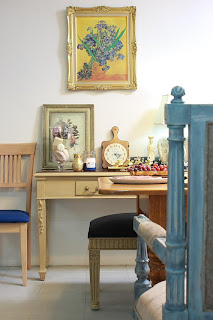Shooting interiors can be a lot of fun, at the same time, it can be a bit of a challenge. One of the most common obstacles that a photographer encounters when shooting interiors is how to handle the lighting. In most cases, an interior would already have an ambient lighting which matches the theme of the room, and, more often than not, this ambient lighting would suffice to make a good image.
From here, a photographer can decide then whether to shoot the interior with its ambient lighting only or to mix it with flash or strobe light. Me however, I choose the latter (most of the time), and for a good reason. By mixing ambient and strobe light, I can fill in areas of shadows and/or add highlights unto the image. Here's how I do it.
First, I strongly suggest that you use a tripod when shooting interiors. This will greatly help you steady the camera since you would be using long exposures if you are going to capture that ambient light.
When mixing ambient and strobe lighting, remember that your shutter speed controls the ambient light and the aperture controls your strobe/flash lighting.
In this photo, I added strobe lighting coming from the right and hitting the right side of the wall and the table top. Being careful not to drown out the ambient light of the room and the lamp.
To do this, I first set my f-stop at 5.6 since I wanted to blur the foreground just a bit. I metered for the ambient light to get the right combination of aperture and shutter speed for the correct exposure. Once I got that, I placed my strobe at camera right in line with the table and bounced it off to a wall on the right. By bouncing my light off to a wall, I was able to soften up the light falling onto the table. I then adjusted my ambient light settings to yield for a half-a-stop underexposure (to allow for that highlight from my strobe). Set the power of my strobe half-a-stop over the original ambient light reading to create that slight highlight on the wall and table top.
In another example of mixing ambient and strobe lighting, for this photo I metered for the ambient light first and simply filled in the shadow areas by bouncing my strobe onto a wall behind the camera.
Hope this helps. Happy shooting!


No comments:
Post a Comment